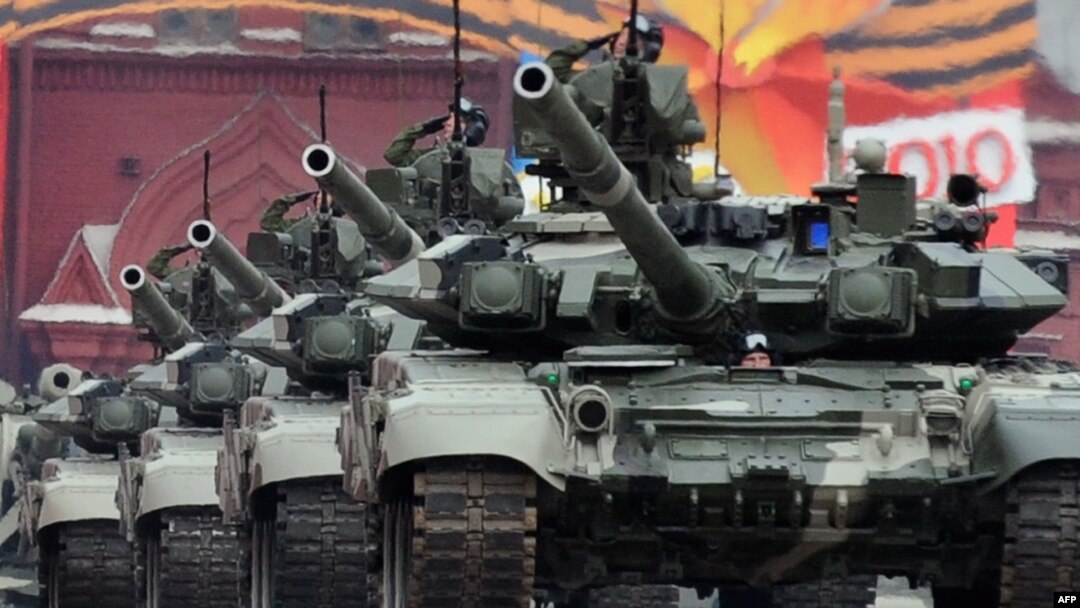India is the world's leading importer of weapons, while the United States and Russia are responsible for about half of the globe's arms exports, according to a new study by the Stockholm International Peace Research Institute (SIPRI).
The report says that between 2007 and 2011, India accounted for about 10 percent of all world weapons imports, with most arms coming to India from Russia, followed by Britain and Israel.
During the same period, the report said, the volume of international weapons sales was 24 percent higher than between 2002 and 2006.
SIPRI, an independent institute that specializes in arms control and disarmament issues, said the other top importers all came from Asia: South Korea, Pakistan, China, and Singapore, which together accounted for almost one-third of all international arms imports.
The report said European countries accounted for 19 percent of world arms imports, the Middle East 17 percent, North and South America 11 percent, and Africa 9 percent.
While India was the world's largest importer, regional rival Pakistan was the third largest, with 5 percent of the world's weapons imports.
The SIPRI report said that Pakistan had received a significant number of combat aircraft from China, adding that both Pakistan and India were also continuing to order large quantities of tanks.
The report said China, which was the world's top arms importer in 2006 and 2007, was now ranked fourth. The study says the decline in Chinese imports comes as Beijing seeks to develop its domestic arms industry and decrease its reliance on outside supply.
China is the sixth-largest world exporter of weapons behind the United States, Russia, Germany, France, and Britain.
SIPRI said the U.S., the world's top exporter, accounted for 30 percent of global arms exports, selling arms to more than 80 countries.
It said Russia's share of the global arms trade stood at about 24 percent.
SIPRI said Syria's arms imports increased by almost 600 percent between 2007 and 2011, compared with the previous five-year period, and said longtime Damascus ally Russia supplied 72 percent of Syrian arms purchases.
The study did not specify the volume of Russian weapons exports after the opposition uprising in Syria began in March 2011.
The report says Russian arms sales to Syria between 2007 and 2011 included air-defense systems and anti-ship missiles. Although the study points out that such systems and missiles have no use in the current conflict between the Syrian regime and opposition forces, it does say the arms have improved the regime's ability to defend itself against foreign intervention.
The report says that between 2007 and 2011, India accounted for about 10 percent of all world weapons imports, with most arms coming to India from Russia, followed by Britain and Israel.
During the same period, the report said, the volume of international weapons sales was 24 percent higher than between 2002 and 2006.
SIPRI, an independent institute that specializes in arms control and disarmament issues, said the other top importers all came from Asia: South Korea, Pakistan, China, and Singapore, which together accounted for almost one-third of all international arms imports.
The report said European countries accounted for 19 percent of world arms imports, the Middle East 17 percent, North and South America 11 percent, and Africa 9 percent.
While India was the world's largest importer, regional rival Pakistan was the third largest, with 5 percent of the world's weapons imports.
The SIPRI report said that Pakistan had received a significant number of combat aircraft from China, adding that both Pakistan and India were also continuing to order large quantities of tanks.
The report said China, which was the world's top arms importer in 2006 and 2007, was now ranked fourth. The study says the decline in Chinese imports comes as Beijing seeks to develop its domestic arms industry and decrease its reliance on outside supply.
China is the sixth-largest world exporter of weapons behind the United States, Russia, Germany, France, and Britain.
SIPRI said the U.S., the world's top exporter, accounted for 30 percent of global arms exports, selling arms to more than 80 countries.
It said Russia's share of the global arms trade stood at about 24 percent.
SIPRI said Syria's arms imports increased by almost 600 percent between 2007 and 2011, compared with the previous five-year period, and said longtime Damascus ally Russia supplied 72 percent of Syrian arms purchases.
The study did not specify the volume of Russian weapons exports after the opposition uprising in Syria began in March 2011.
The report says Russian arms sales to Syria between 2007 and 2011 included air-defense systems and anti-ship missiles. Although the study points out that such systems and missiles have no use in the current conflict between the Syrian regime and opposition forces, it does say the arms have improved the regime's ability to defend itself against foreign intervention.


